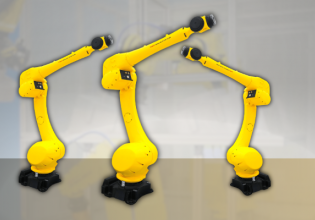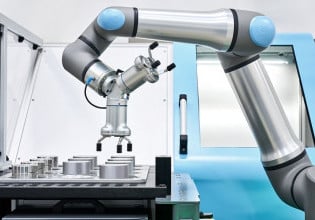Research Utilizes Control Technology to Generate Automated COVID-19 Detection in San Diego Wastewater
Researchers develop an automated, high-throughput method for COVID-19 detection in wastewater using liquid-handling robots.
In a recent study published this month, researchers from the University of California, San Diego (UC San Diego) detailed using an automated magnetic-bead-based concentration approach for high-throughput detection of severe acute respiratory syndrome coronavirus 2 (SARS-CoV-2) in wastewater.
Wastewater samples were processed to obtain genetic material, known as ribonucleic acid (RNA), and an amplification technique detected and quantified SARS-CoV-2 RNA. The researchers used automated liquid handling robots to economize on speed and efficiency and reduce human error.

San Diego County’s primary wastewater treatment plant is located in Point Loma. Image used courtesy of UC San Diego
Identifying potential SARS-CoV-2 outbreak clusters is an essential component of disease management and can make a substantial difference in mitigating disease spread within a community. Wastewater-based epidemiology can be an effective tool for mapping the extent and spread of SARS-CoV-2.
Previous studies observed high correlation levels between viral concentration in sewage to clinically reported cases in a community, with trends showing early forecasting of 2 to 8 days when screening wastewater. What has appeared to stand in the way of large-scale wastewater surveillance is the limited availability of a viral concentration methodology that is robust and able to rapidly process a large number of samples.
Automated Liquid-Handling
The research team collected wastewater samples from San Diego County’s primary wastewater treatment plant in the Point Loma neighborhood. Wastewater from the County’s residents (approximately 2.3 million), along with that from the UC San Diego campus, comes to this plant.
UC San Diego Postdoctoral Researcher Smruthi Karthikeyan and the rest of the research team led by Rob Knight, Ph.D., Professor, and Director of the Center for Microbiome Innovation at UC San Diego, devised an automated method for concentrating wastewater for COVID-19 detection. The team used the KingFisher Flex liquid-handling robot platform.
The automated, high-throughput system can process 24 samples within a 40-minute run time. Researchers can then add the generated data to a digital dashboard to identify and track any new positive cases. The UC San Diego team believes that their method is more cost-effective, fast, and sensitive than other wastewater surveillance methods.

Smruthi Karthikeyan, Ph.D., stands next to the liquid-handling robotic platform. Image used courtesy of UC San Diego
The team demonstrated the robustness of its high-throughput method by comparing it to existing methods. The team was able to show that COVID-19 cases in San Diego could be predicted by a week with high accuracy, and three weeks with fair accuracy, by testing San Diego County’s sewage.
An Early Alert System
Knight and his research team continue collecting samples and running the high-throughput method for the UC San Diego campus.
In one scenario, a positive case was identified in the Revelle College area. The campus community was notified within 14 hours, and targeted messages were sent to people associated with the affected buildings. They were advised to undertake a test to identify whether they had contracted the coronavirus.
Over 650 people were tested for COVID-19 on the weekend of the incident. Two asymptomatic individuals were identified as being positive for the virus. The campus quickly notified them, and they self-isolated to avoid an outbreak. The wastewater screening results are available on a public dashboard, and positive samples are being sequenced to track the emergence of any new SARS-CoV-2 variants.

A chart tracking SARS-CoV-2 positive wastewater. Image used courtesy of mSystems
In a recent news release, Knight commented on his hopes for wastewater-based epidemiology and other early alert systems for large-scale infectious diseases to become more widely adopted. He also noted it is advantageous in vulnerable communities with less access to diagnostic testing.
Not only could the automated, high-throughput approach from the UC San Diego team be adopted for the San Diego County community, but it could also be applied to wastewater facilities around the globe. Early detection of SARs-CoV-2 is of clear importance, but other waterborne pathogens could also be detected with more effective, rapid disease control measures put in place.






